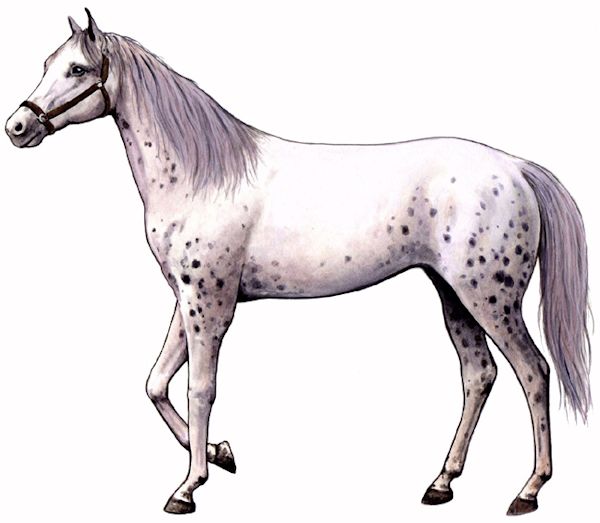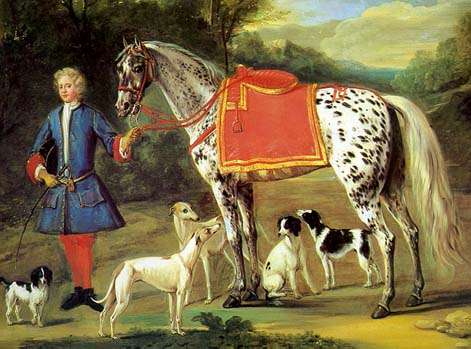A jennet or Spanish jennet was a small Spanish horse noted for a smooth naturally ambling gait, compact and well-muscled build, and a good disposition. The jennet was an ideal light riding horse, and provided some of the foundation bloodstock for several horse breeds in the Americas.
A jennet, which is sometimes spelled genet, was a small Spanish saddle horse. The jennet was a type, rather than a breed of horse. The term was in regular use during the Middle Ages to refer to a specific type of horse, usually one of Iberian or Barb extraction, often gaited, but is no longer in use today.

Jennet is derived from the French genet, or from Spanish jinete, meaning a light horseman who rides à la jineta, explained as “with his legs tucked up.” This referred to their style of riding with shorter stirrups, which they preferred for closer collection of the horse.
The term is taken to be a corruption of Zenata, a Berber tribe famed for its cavalry. In English and French, the word came to refer to the horse rather than the style of riding. In Spanish, that meaning has developed in modern times.
The American Heritage Dictionary’s etymology is similar, citing the Middle English genet, from Old French; from the Catalan ginet, of Arabic and, ultimately, of Berber origin.
Jennet is also a term used to describe a female donkey.
The modern Spanish Jennet Horse, Paso Fino and Peruvian Paso breeds probably most closely resemble the original jennet. In the treatise Il Cavallarizzo written by Claudio Corte in 1562, three years after the end of the Great Italian Wars, the author describes at length the qualities of the ginecti (jennets) as horses useful for war.
 According to Corte, the jennets were one of the most commonly used horses by the Spanish light cavalry. Spanish heavy cavalry used a different breed which Corte refers to as Villanos. Interestingly, there is no mention of the Andalusian as a war horse in Corte’s book, indicating that that breed either did not exist or was not used for war during the rise of Spain as a major European Power in 1494–1562.
According to Corte, the jennets were one of the most commonly used horses by the Spanish light cavalry. Spanish heavy cavalry used a different breed which Corte refers to as Villanos. Interestingly, there is no mention of the Andalusian as a war horse in Corte’s book, indicating that that breed either did not exist or was not used for war during the rise of Spain as a major European Power in 1494–1562.
The castle of Venafro in the Italian region of Molise, which was under Spanish rule in the 1500s, has numerous frescos portraying the ginecti (jennets), which seem to closely resemble a modern day Criollo horse or a Peruvian Paso.
